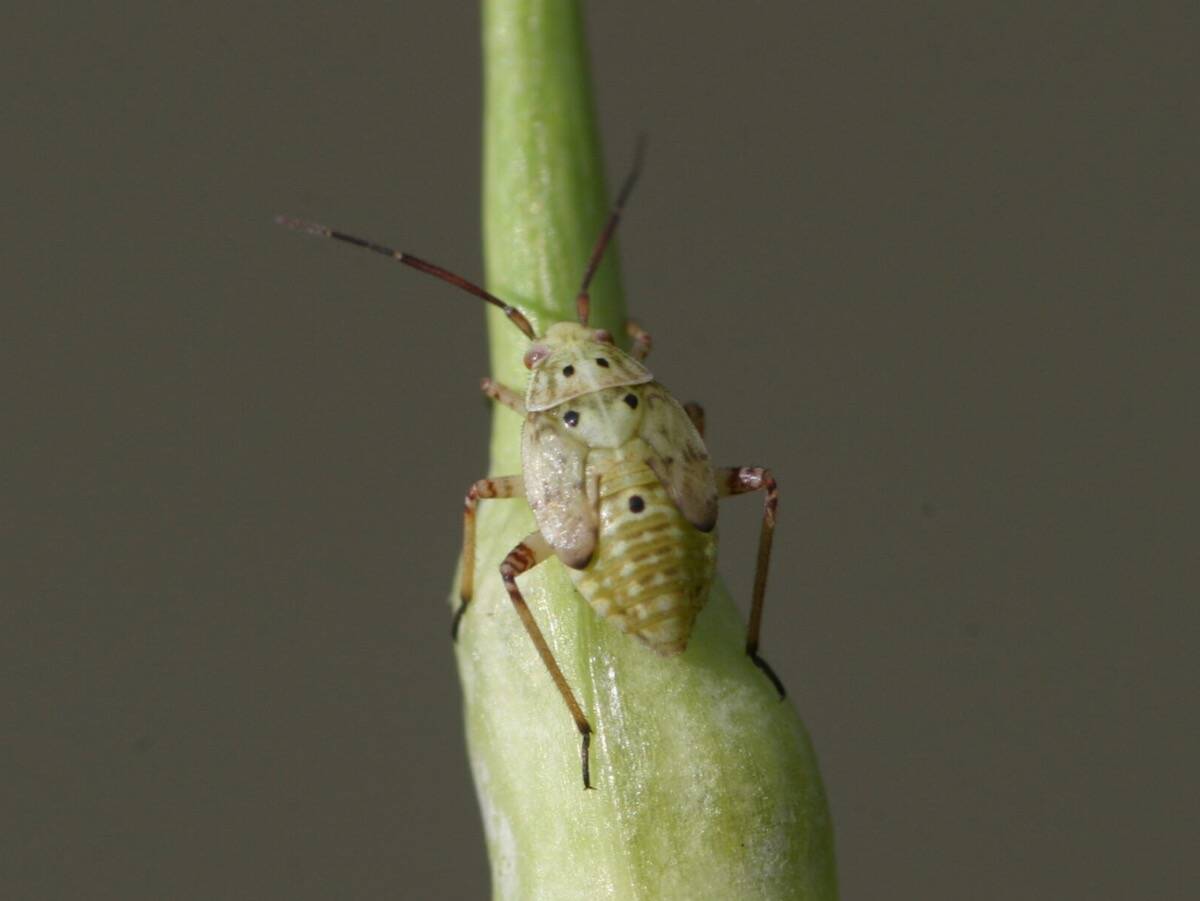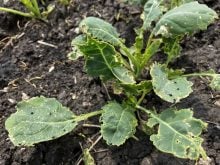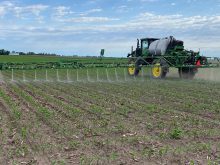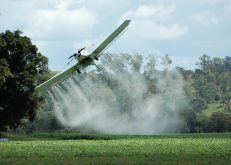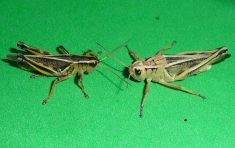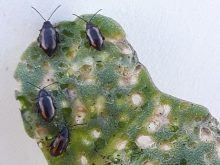Farmers growing faba beans have likely seen the damage lygus bugs can do. The dark, sunken spots on the seed not only reduce the quality, but can push a crop out of the food market entirely.
That’s what a recent two-year study aimed to address, with Agriculture and Agri-Food Canada researchers looking at practical ways to limit lygus damage in faba beans. They focused on the pest’s tendency to migrate into faba from other crops as they mature and dry down.
Lygus feed on a wide range of hosts and are drawn to plants with flowers and tender tissue. That makes flowering time critical. Unfortunately for faba beans, their pod fill stage often lines up with the drydown period in nearby crops, which draws in lygus bugs at the worst possible time.
Read Also

Final crop reports show strong yields, quality
Crops yielded above average across the Prairies this year, and quality is generally average to above-average.
Trap cropping
That’s where trap crops come in. The idea is simple: plant something even more attractive than faba beans along the field edge, draw lygus in and hit them with an insecticide before they move on.
Trap cropping isn’t a new concept. AAFC entomologist Héctor Cárcamo, who led the lygus bug study, points out it was common for farmers to use trap crops to control wheat stem sawfly before resistant, solid-stem wheat varieties became available.
“Farmers would plant things like oats along the borders and ditches,” he says.
Nowadays, trap crops are more common in regions with smaller fields, where farmers can afford to manage more complex systems. On the Prairies, where farms are large and time is tight, adding extra steps such as planting and managing a separate trap crop can be a tough sell.
Still, Cárcamo believes there’s untapped potential.
“There are opportunities we’re missing in terms of reducing insecticide costs and the environmental impacts of spraying,” he says.
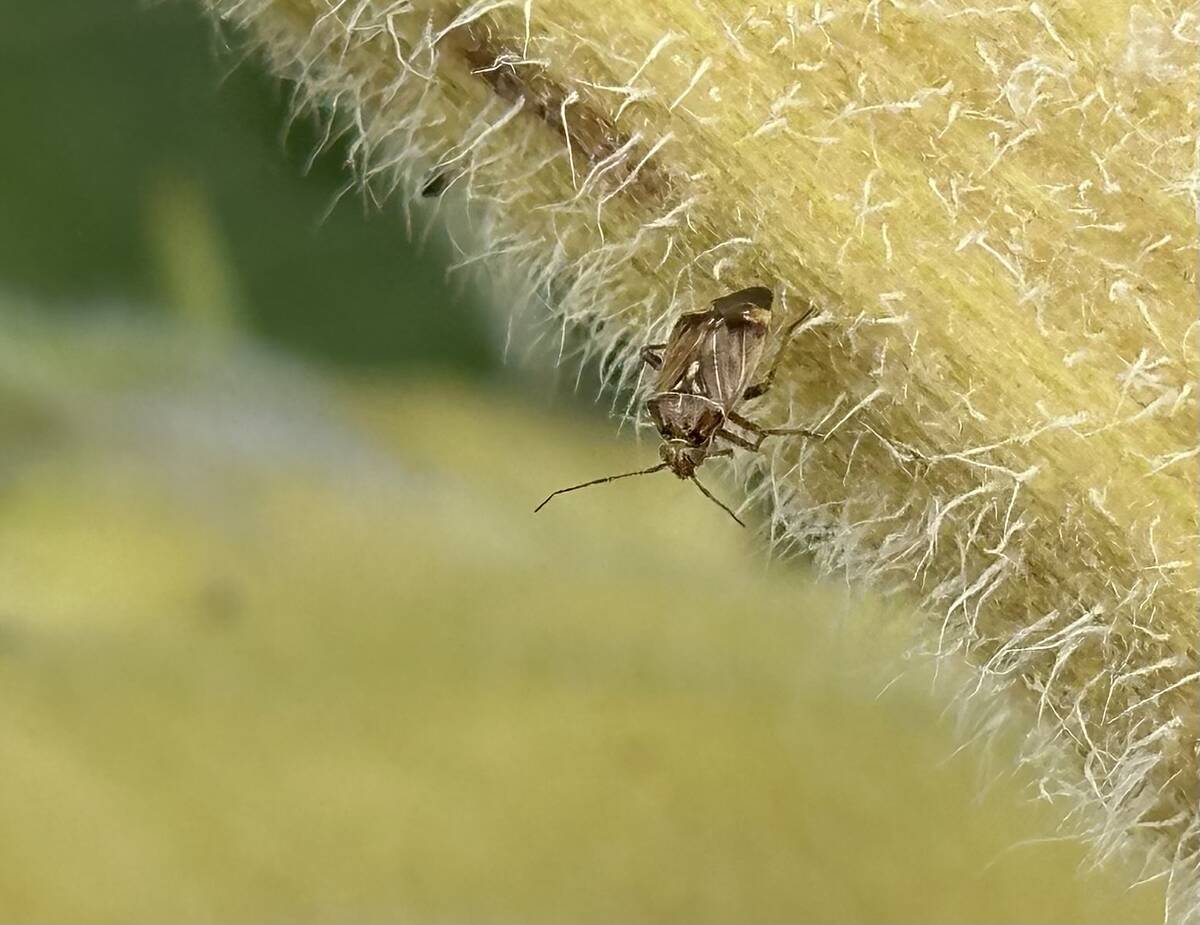
There’s also the looming threat of resistance. Lygus has already shown signs of resistance to some pyrethroids like Matador in cotton in the U.S.
“We should be taking whatever steps we can to reduce repeated applications of the same insecticides,” says Cárcamo.
What they tested
The research team used both lab and field trials to test how lygus responds to different crops. In the lab, they offered bugs a choice between faba beans and five other species: flax, peas, canola, safflower and alfalfa.
While there were hints that lygus males caused more damage when canola was in the mix, nothing significantly outperformed faba beans in terms of attractiveness. Cárcamo isn’t surprised.
“You’re in a very artificial environment in the lab,” he says. “What you see there doesn’t always play out in the field.”
The real insights came from side-by-side field trials at Lethbridge and Vauxhall, Alta., where faba beans were grown next to each potential trap crop. Researchers monitored lygus numbers and necrotic seed damage in the faba plots and tested two different insecticides to see how spraying affected outcomes.
What they found
First off, not every crop worked equally well. Peas and flax had the lowest lygus numbers, meaning they were less attractive and offered little trap potential.
Canola, on the other hand, was a major lygus magnet. Unfortunately, the bugs didn’t stop there: they spilled into the faba plots and caused serious seed damage.
“It was very clear they love canola and all the brassicaceae crops,” says Cárcamo. “But the problem is they also like faba beans enough to cause damage.”
Canola attracts lygus effectively, but to work as a trap crop, it has to be paired with well-timed insecticide applications. Otherwise, the bugs may still reach the faba beans.
Safflower appears to hold lygus bugs for longer. In 2022, faba beans beside safflower had significantly less damage than those next to canola. This lines up with findings from cotton systems in other countries, where safflower has been used as an effective trap crop.
Sunflowers, tested in 2023, also attracted high lygus numbers. Damage in adjacent faba plots was still present, but researchers observed high levels of parasitism by beneficial wasps such as Peristenus. That opens the door to more integrated strategies.
“There’s potential to use crops like sunflowers not just to attract lygus, but to support natural enemies,” Cárcamo says.
For organic growers, especially, safflower could be a good candidate.
“That might be the crop where you can hope to retain the lygus bug the longest,” Cárcamo says. “They like it better than faba beans, so the damage should be less.”
He cautions that trap cropping alone won’t reduce lygus populations, but it may help delay damage long enough to make a difference.
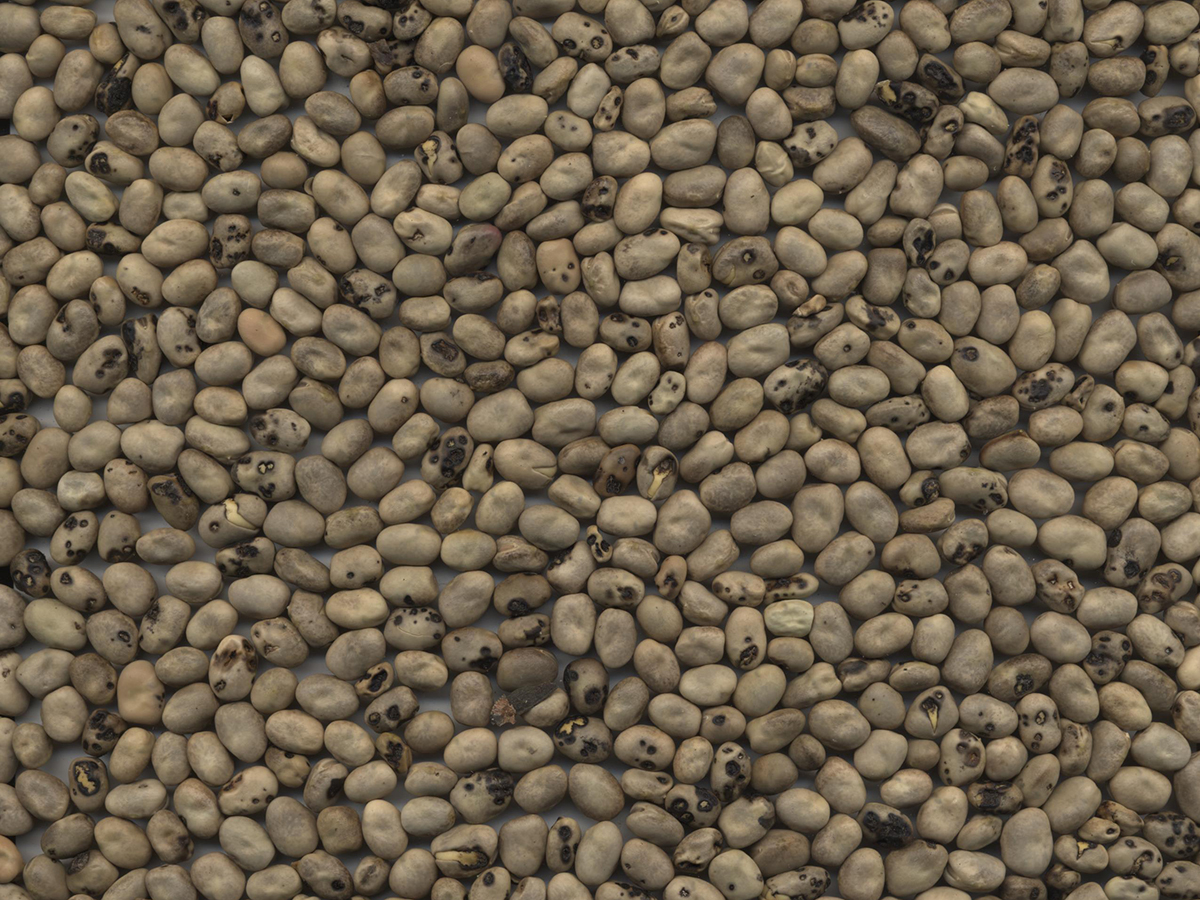
In a situation like this, he adds, there’s a need to integrate trap crops with natural enemies such as parasitoid wasps that attack the baby lygus. And for non-organic farmers, if needed, he recommends using selective insecticides that are soft on the beneficial insects essential for faba seed set.
Role of insecticides
The insecticide trials also revealed key insights. In 2022, the team used Beleaf, a product with low impact on pollinators and beneficials. It didn’t significantly reduce damage.
In 2023, they switched to lambda-cyhalothrin, a more aggressive pyrethroid. That spray reduced both lygus numbers and seed damage, but with greater risk to non-target insects.
What’s next?
Cárcamo says this work is still in its early days. Larger-scale trials in commercial fields are needed to confirm which trap crops work best and how to fine-tune the approach.
One scenario he’d like to test involves planting strips of faba beans and peas side by side, with canola along the field edges to act as a trap. But he doesn’t recommend farmers try this before the idea has been tested more.
“I’d like to look into the possibility of doing an experiment with a farmer,” he says. “That way, we can try it at a smaller scale first and monitor before scaling up to a full field.”
This year, he’s shifting focus slightly to test similar ideas in lentils, which will involve more real-world testing, including trials in lentil fields and work on natural enemy populations.
“We’re now looking for lentil growers to participate,” he says. “We want to measure how many natural enemies are present in the field.”
He’s also exploring options that could prove helpful for organic growers. In the lab, his team is testing insect-killing fungi — known as entomopathogens — on alfalfa weevils. The fungi work, but they’re slow, often taking two weeks to kill the insect.
“So you’d need a crop with a long flowering period, like safflower, to hold the pests long enough for the fungus to do its job,” he explains.
For now, trap crops will likely remain a tough sell for Canadian farmers. But the research shows that with the right crop, timing and spray strategy, they might give farmers — organic or otherwise — another tool to manage this tricky pest.


